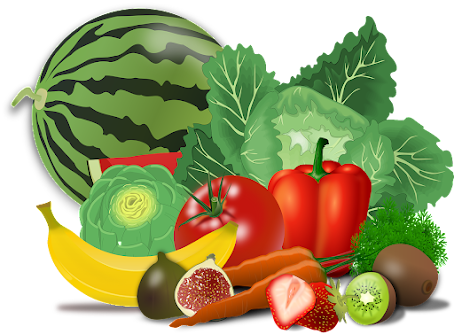What is the difference between vegetables and fruits?
Some chefs consider the tomato a vegetable despite the fact that it is botanically classified as a fruit.
Sometimes it's easy to tell the difference between fruit and vegetables. Regardless of the context, a peach is always classified as a fruit, while a carrot is always classified as a vegetable. However, there is a substantial intersection between these two types of fruits and vegetables in the corresponding Venn diagram. It's because the European Food Information Council (EUFIC) reports that the terms "fruit" and "vegetable" have distinct meanings depending on whether you're a gardener or a chef (opens in a new tab).
The tomato is located smack in the middle of the shared area. At times, this is considered a fruit; at others, it is more appropriately classified as a vegetable.
What is the botanical distinction between fruits and vegetables? Fruits are structures that emerge from the ovary of a flowering plant, as described in Postharvest Physiology and Biochemistry of Fruits and Vegetables (opens in a new tab).
On the other hand, vegetables include things like stems, leaves, and roots. Fruits include everything with seeds, like apples, squash, and tomatoes, while vegetables include beets, potatoes, turnips, spinach, kale, lettuce, and celery.
From a gastronomic perspective, though, things appear very different. Chefs often refer to foods that are botanically fruits as vegetables since they are frequently employed in savoury recipes rather than sweet ones. EUFIC says this category comprises eggplants, bell peppers, and tomatoes, all of which are botanical fruits.
A poll conducted in 2011 and published in the journal Public Health Nutrition found that language and culture can influence one's impression of what constitutes a fruit or vegetable. In the United States, 20% of adults polled classified rice as a vegetable. Speakers of Spanish were more inclined to classify rice as a vegetable than Chinese speakers. Vegetables in general, and beans in particular, are divisive. In contrast to their Spanish-speaking counterparts, most English speakers would classify them as vegetables.
Sometimes people get so worked up about the distinction between fruits and vegetables that the government has to step in. According to the Mercer Law Review, in 1893, the United States Supreme Court unanimously decided that an imported tomato should be taxed as a vegetable rather than a (less taxed) fruit. The court recognized the tomato's status as a botanical fruit but sided with the "ordinary" or culinary classifications of fruit and vegetables.
More tools
If you want to learn more about what makes certain fruits what they are, check out this New York Botanical Garden piece. The Harvard School of Public Health has published extensive research on the health advantages of fruit and vegetable consumption.
Reference : https://www.livescience.com/33991-difference-fruits-vegetables.html
Image source :
https://pixabay.com/id/vectors/sayuran-buah-buahan-makanan-155616/
Is a cucumber a fruit or a vegetable?
Which fruit is actually a vegetable?
Why is strawberry not a fruit?
What is the difference between vegetables and fruits?
Is a potato a vegetable?
Is rice healthy to eat?
Do french fries count as a vegetable?
What is the difference between vegetables and fruits?
Is rice a vegetable?




Komentar
Posting Komentar